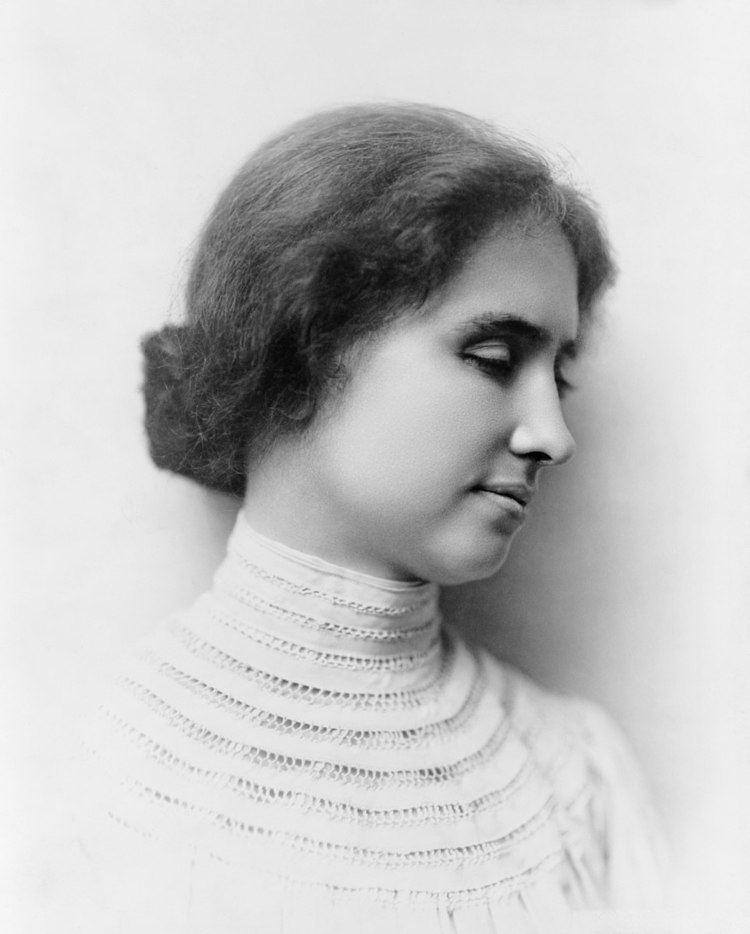 | ||
Deaf-blindness is the condition of little or no useful sight and little or no useful hearing. Educationally, individuals are considered to be deaf-blind when the combination of their hearing and sight loss causes such severe communication and other developmental and educational needs that they require significant and unique adaptations in their educational programs. Helen Keller was one such individual.
Contents
Communication
Deaf-blind people communicate in many different ways as determined by the nature of their condition, the age of onset, and what resources are available to them. For example, someone who grew up deaf and experienced vision loss later in life is likely to use a sign language (in a visually modified or tactile form). Others who grew up blind and later became deaf are more likely to use a tactile mode of their spoken/written language. Methods of communication include:
Multisensory methods have been used to help deaf-blind people enhance their communication skills. These can be taught to very young children with developmental delays (to help with pre-intentional communication), young people with learning difficulties, and older people, including those with dementia. One such process is Tacpac.
Deaf-blind amateur radio operators generally communicate on 2-way radios using Morse code.
Technology
Braille equipment includes a variety of multipurpose devices, which enhance access to distance communication. Some can be used as stand-alone devices connected via Wi-Fi, while others are paired with a mobile device to provide tactile access to e-mail, text messaging, and other modern communication resources. To receive Braille equipment, an eligible consumer must be proficient in Braille and must have access to the Internet or cellular service.
The Telebraille does not have a computer communications modem but does have a TTY (TDD) modem. It was designed as a TTY for deaf-blind people and is also useful for face-to-face conversation. It has two components. The sighted component is a modified SuperCom TTY device. It has a qwerty keyboard and a single-line LED display. The display is regular size and is not particularly suited to people with low vision. The SuperCom TTY can be connected directly to the telephone line using a conventional telephone jack or the telephone receiver can be coupled to the SuperCom on a cradle on top of the device. Text flows past the display in a continuous stream, like tickertape. The SuperCom is connected to the Braille portion of the device by a cable that is about two feet long. The Braille display is about 15 characters in width, although there is a knockout to allow additional characters to be installed, at considerable additional cost. The Telebraille is able to communicate in ASCII mode but is not compatible with conventional computer modems. There is what looks like a RS-232 socket on the back of the Braille component, but the instructions for the Telebraille state that this jack is for "future use" and that no computer devices should be attached to it.
A graphic Braille display can be used in sensing graphic data such as maps, images, and text data that require multiline display capabilities such spreadsheets and equations. Graphic Braille displays available in the market are DV-2 (from KGS ), Hyperbraille, and TACTISPLAY Table/Walk (from Tactisplay Corp.). For example, TACTISPLAY Table can show 120*100 resolution refreshable Braille graphics on one page. This video shows operation of the device.
Causes
Common causes of deaf-blindness include birth trauma, optic nerve atrophy, cataracts, glaucoma, macular degeneration, or diabetic retinopathy. Some people may be born with both hearing and visual impairments through birth trauma or rare causes such as CHARGE Syndrome or cortical visual impairment. Helen Keller, for example, became blind-deaf when she caught an illness called "brain fever" when she was only 19 months old. Laura Bridgman, another example, caught an illness called scarlet fever when she was only 24 months old. Not only did Bridgman lost her sight and hearing, but also lost her sense of smell and nearly all of her sense of taste. More causes are in the list below.
Major Causes of Deaf-Blindness
Multiple Congenital Anomalies
Prematurity Congenital Prenatal Dysfunction
Post-natal Causes
